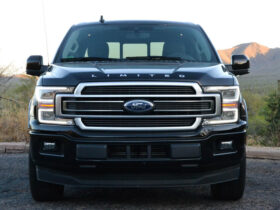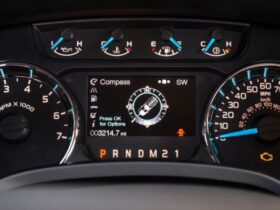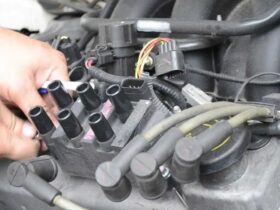A 4-wheel drive (4WD) is an important feature in Ford F150 trucks that enables power distribution to all four wheels simultaneously, significantly enhancing traction and control in challenging driving conditions. Whether you have an older model with manual hubs or a newer truck with an electronic system, understanding how to properly engage and use 4WD is essential for maximizing your truck’s capabilities.
Using 4WD on Ford F150
1. Manual Locking Hub System (Older Models)
For F150s equipped with manual locking hubs, the engagement process requires physical interaction with the wheel hubs. These hubs, located at the center of each front wheel, allow you to manually connect or disconnect the front wheels from the four-wheel drive system. While this older system requires more effort, it offers reliable performance and is less prone to electronic failures.
Step-by-Step Manual Hub Engagement Process:
- Park your truck on level ground and engage the parking brake
- Locate the locking hubs on both front wheels
- Turn each hub’s control dial clockwise to the “LOCK” position until you hear a distinct clicking sound
- Return to the cabin and shift the transfer case into 4WD mode
- Release the parking brake and begin driving
2. Electronic Shift-On-the-Fly (ESOF) System (Modern Models)
Modern F150s feature the more sophisticated Electronic Shift-On-the-Fly system, which allows drivers to switch between drive modes without leaving the vehicle. This system integrates with the truck’s computer and can be controlled through dashboard controls or steering wheel buttons.
Understanding ESOF Drive Modes:
- 2H (Two-Wheel High): Standard rear-wheel drive for normal road conditions and optimal fuel economy
- 4H (Four-Wheel High): Engages all four wheels at normal driving speeds, ideal for snow, rain, or light off-road conditions
- 4L (Four-Wheel Low): Provides maximum torque at low speeds for serious off-road situations or deep mud/snow
Advanced Features and Capabilities
Modern F150s with 4WD also include specialized features for specific driving scenarios:
Hill Descent Control:
This feature automatically modulates brake pressure to maintain a steady speed when descending steep grades. To activate:
- Press the hill descent control button on the dashboard
- Use the accelerator or brake to set your desired descent speed
- The system will maintain that speed automatically
Terrain Management System:
Some models include preset modes for different conditions:
- Normal: For everyday driving
- Mud/Ruts: Optimizes traction control and power delivery for muddy conditions
- Sand: Adjusts throttle response and traction control for sandy terrain
- Snow/Wet: Provides enhanced traction control for slippery conditions
When to Use 4-Wheel Drive
Understanding when to engage 4WD is crucial for both safety and vehicle longevity:
Appropriate Conditions:
- Deep snow or mud
- Steep inclines with poor traction
- Off-road trails
- Sandy beaches or desert terrain
- Heavy rain with poor road conditions
- Towing in challenging conditions
Important Considerations:
- Speed Limitations: Avoid high speeds in 4WD mode, particularly in 4L
- Surface Conditions: Don’t use 4WD on dry, paved roads as it can damage the drivetrain
- Turning Radius: 4WD mode increases the turning radius and can cause binding on tight turns
- Maintenance: Regular inspection of the 4WD system components ensures reliable operation
Maintenance Tips
To keep your F150’s 4WD system operating properly:
- Regularly check transfer case fluid levels
- Inspect locking hubs (if equipped) for damage or wear
- Test the system monthly, even if not needed, to ensure proper operation
- Listen for unusual noises when engaging or disengaging 4WD
- Have the system professionally serviced according to the maintenance schedule
By understanding and properly using your F150’s 4WD system, you can safely navigate challenging terrain while maintaining your vehicle’s longevity. Remember that 4WD isn’t intended for constant use but rather as a tool for specific driving conditions that require enhanced traction and control.






Leave a Reply
View Comments